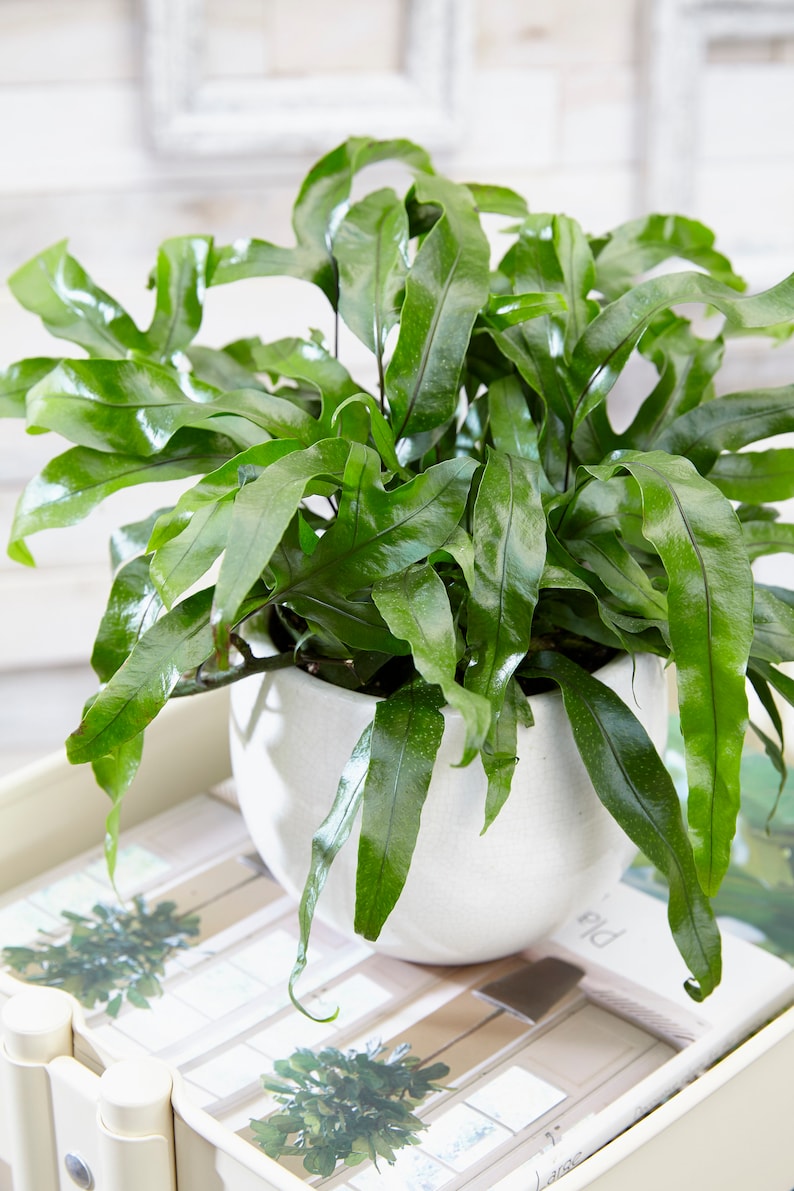Ferns are lovely, elegant plants whether positioned indoors or outside, and the Kangaroo Paw Fern is no exception.
Learn how to care for and grow the kangaroo paw fern in this in-depth guide.
Kangaroo Paw Fern Overview
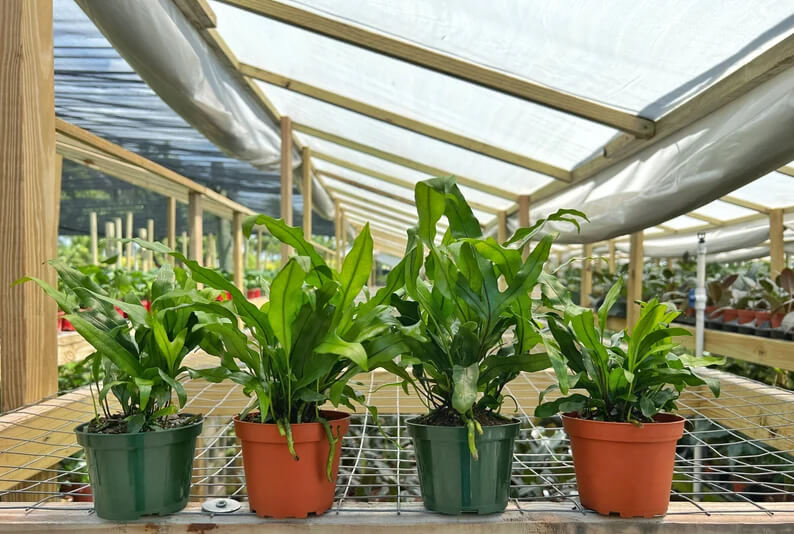
Botanically named the Microsorum diversifolium, it is a member of the Polypodiaceae family and is a native of Australia and New Zealand.
These ferns are epiphytic evergreen plants that will grow to approximately three feet wide and about one foot tall.
A perfect plant for both shade and filtered shade, it grows in USDA hardiness zones 9 through 11. It is ideal both for tabletop containers and hanging baskets.
Vivid green, uniquely shaped leaves will offer a striking addition to any room in your home. As a fern, however, it will not produce flowers.
Kangaroo Paw Fern Care Guide
Soil for the Kangaroo Paw Fern
The kangaroo paw fern requires a soil mix that is well-draining, yet retains moisture. This means that your plant’s soil bed should be amended with perlite, compost, or pine or orchid bark.
The bark or perlite will help to keep the soil aerated. Coco coir is another ingredient to consider as it will help with moist retention that is essential to the fern’s survival.
Be sure to keep the soil moist, but well-draining. Soggy soil can lead to root rot.
Light for the Kangaroo Paw Fern
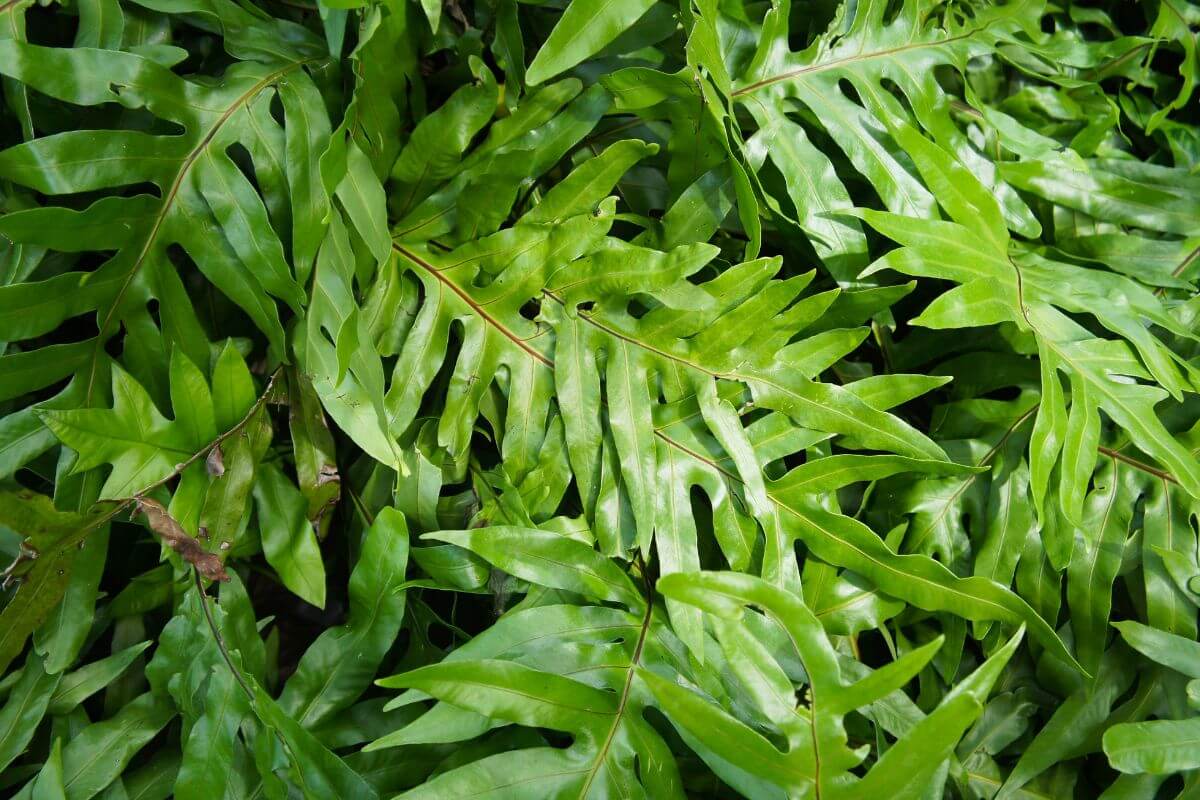
Kangaroo paw ferns thrive in brightly lighted spots, but sunlight exposure must be indirect. Put it in an area with partial shade to protect it from direct sunlight exposure.
They will also adapt to low-light conditions, but too little light can stunt the fern’s growth. If your fern doesn’t appear to grow, put it in a location with a bit more light.
Water and Humidity for the Kangaroo Paw Fern
The soil bed must remain consistently moist but never soggy as this fern does not appreciate sitting in water. Collected rainwater or distilled water is ideal to avoid the chemicals present in tap water, and room temperature water is preferable to cold water.
Avoid watering the crown of your fern. Should the foliage begin to droop, you’ll know your plant needs a drink.
Considering that ferns grow in the shade in forests, they love humidity. This is a terrific bathroom plant, as the kangaroo paw fern loves humidity.
If you place it elsewhere in your home or office, a humidifier or pebble tray will help considerably to maintain adequate humidity levels. You can also create your own higher-humidity microclimate by grouping plants together also to increase humidity levels.
Temperature for the Kangaroo Paw Fern
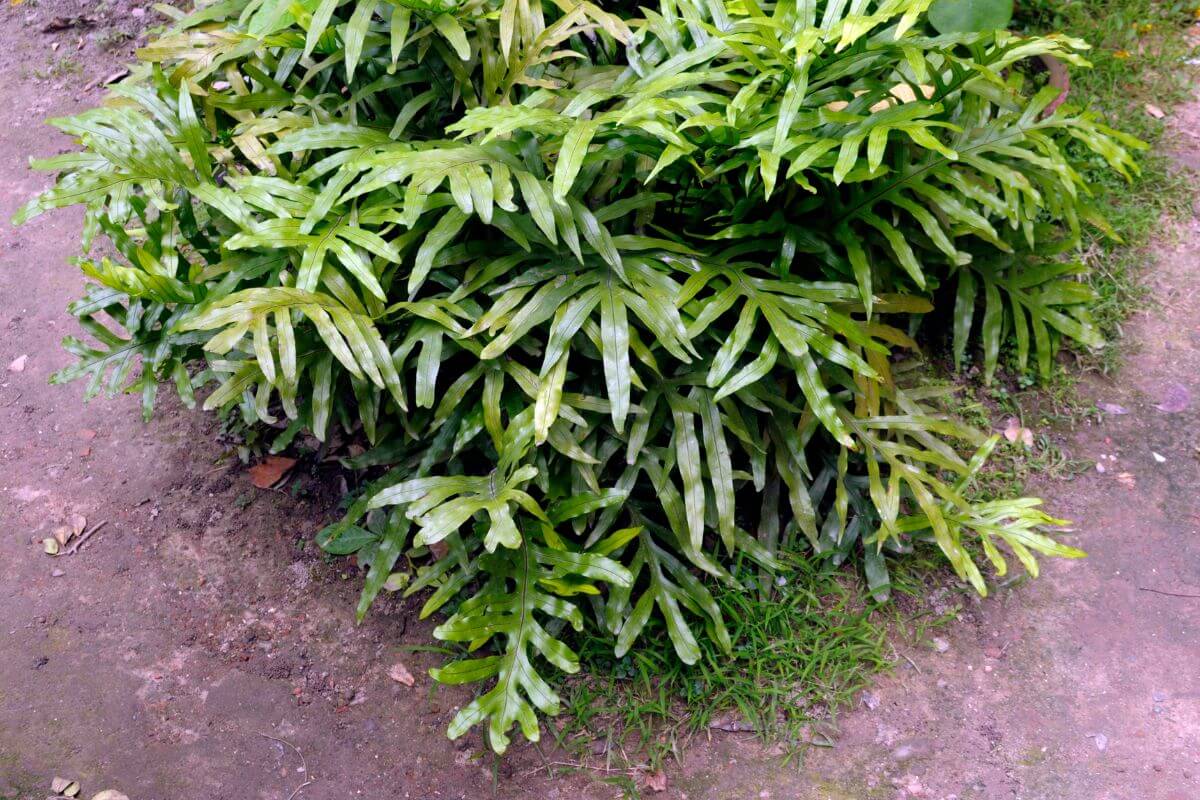
Kangaroo paw ferns prefer an environmental temperature between 60° and 75° Fahrenheit and a location that is free of drafts of any kind.
Keep the plant away from heating and air conditioning units and vents, hallways, drafty windows, doorways, and any source of blowing air. Temperatures that measure too low or too high can damage the plant.
Feeding for the Kangaroo Paw Fern
Your fern is not a huge feeder, but a monthly feeding of a liquid fertilizer diluted to half-strength is ideal during the growing season. In the winter months, you can avoid feeding altogether.
Pruning and Repotting the Kangaroo Paw Fern
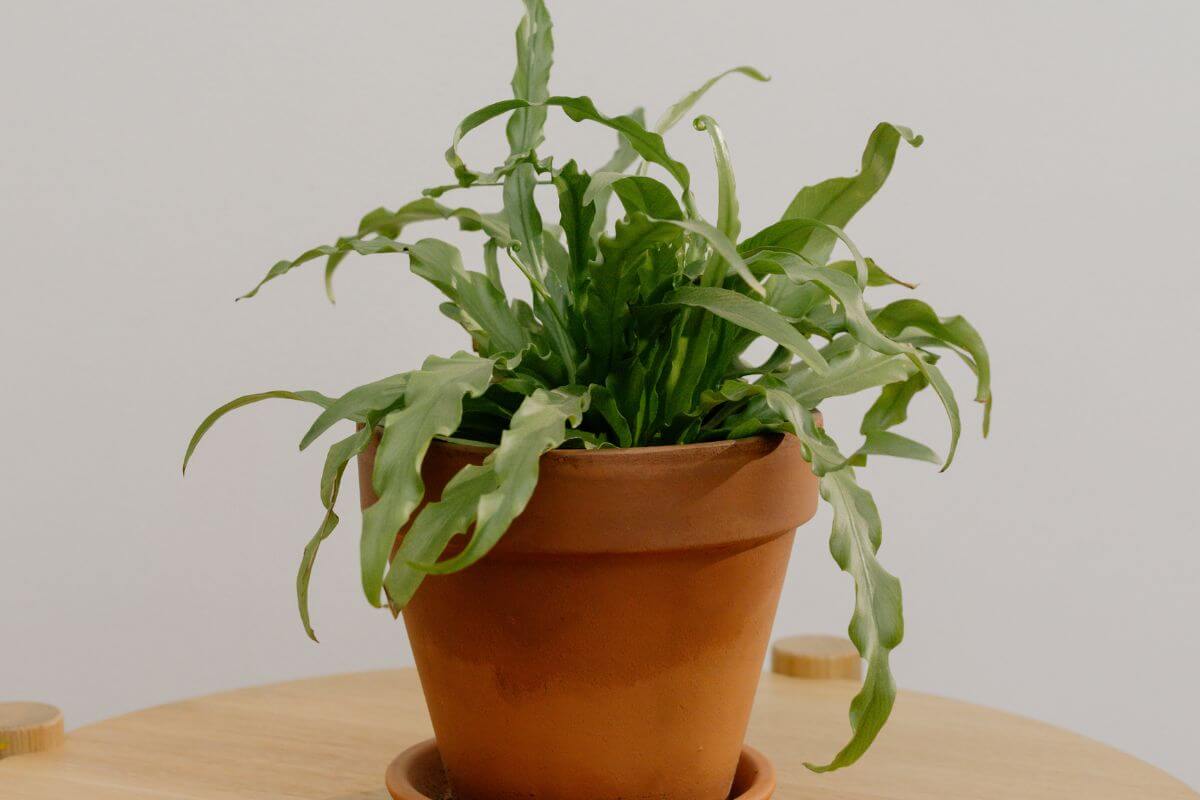
Pruning is good to do every two years when new growth begins to emerge on the fronds. It helps to promote healthy leaf development and encourages flowering if desired.
Pruning also allows keep up with the appearance that can become unsightly from dead leaves. Prune dead fronds at the baseline as soon as they die.
Spring is the best season for repotting your kangaroo paw fern when the plant is in its growing season. These plants will gradually fill the space given to them, so you can probably repot every second year or when the plant is rootbound.
Choose a new pot that is one size larger and always use fresh potting soil.
Propagating the Kangaroo Paw Fern
Ferns typically propagate through their spores. However, they can be propagated thanks to division, especially if your fern is a good-sized one.
To propagate through rhizome division:
- Remove your fern from its container.
- Loosen any dirt that is attached to the plant’s rhizomes.
- Check to see how many rhizomes the plant has and how many divisions you wish to make. Keep in mind that every division should have both rhizomes and foliage. You can divide your fern in half or in more sections if its size will permit this.
- Using a sterile gardening knife, cut through the rhizomes where you wish to divide your fern.
- Now prepare the correct number of new containers by filling them halfway with potting mix.
- Place a single division in each container and then complete filling the container with potting soil.
- Water each division and place them in a warm location with indirect light.
- The soil must be kept evenly moist during this adjustment period. Do not feed your new plants until new growth sprouts.
The other option for kangaroo paw fern propagation is through spores, exactly as the fern would in nature. This process will take longer.
- With a sterile, sharp knife, search for brown spores on the undersides of the fern’s leaves. If they are green, they have not sufficiently matured.
- Cleanly cut off the stem with the fronds and place the cuttings inside an envelope for a week.
- After a week, the spores should be dry, so you can close the envelope and crunch it up. Now remove everything from the envelope, except the spores, which will resemble brown dust.
- Prepare a seeding mix in a container with a lid. Then cover it with a layer of vermiculite.
- Mist the mix lightly with distilled water.
- Spread the spores evenly onto the seed mix. Close the container’s lid.
- Place your container in a well-lit warm spot, but without direct sunlight.
- After approximately two weeks, you should see gametophytes or a green circle on top of the soil.
- Occasionally, open the lid and permit air circulation and mist. You should gradually see small ferns appear in your container.
- Once the fern grows to a larger size, repot it in a larger container or pot.
Kangaroo Paw Fern Pests and Diseases
The kangaroo paw fern is susceptible to typical houseplant pest infestations.
Be on the lookout for mealybugs, aphids, scale insects, and other pests. If you notice an infested fern, move it away from other plants, so they don’t get infested.
Wash your fern gently with soap and water or insecticidal soap. Repot the fern and discard the old soil.
While not particularly susceptible to diseases, occasionally they can suffer from fungal or bacterial infections.
Kangaroo Paw Fern Toxicity and Pets
The kangaroo paw fern has no known toxicity for either dogs or cats. Excessive ingestion of the plant can cause digestive distress or allergic reactions though.
If you do see any potential issues, call the vet immediately.
Kangaroo Paw Fern Care Final Thoughts
The Kangaroo Paw Fern is one of the easier indoor plants to grow. It requires little maintenance and produces beautiful foliage all year round.
The only thing I don’t like about this particular species is that it doesn’t tolerate cold temperatures very well. So keep it out of areas exposed to freezing weather conditions. But otherwise, there aren’t too many problems associated with growing this plant indoors.
Check out some of these care guides for popular houseplants:
- Kangaroo Paw Plant Care and Grow Guide
- False Aralia Plant Care and Grow Guide
- Devil’s Backbone Plant Care and Grow Guide
- Madagascar Palm Tree Care and Grow Guide
Kangaroo Paw Fern FAQs
How do you take care of a kangaroo paw fern?
Taking care of the kangaroo paw fern is easy. Keep the soil moist and if the top inch of soil is dry, give it some water. Give it lots of indirect, bright light. And make sure its temperature stays between 60°F – 75°F.
What kind of light does a kangaroo paw fern need?
The kangaroo paw fern likes bright indirect light. If growing them outdoors, be sure it gets partial shade and is not under direct sunlight. That can lead to scorched leaves.
Are kangaroo paws easy to grow?
Yes, kangaroo paw ferns are relatively easy to grow. They require minimal attention and produce lush foliage throughout the entire season. The only problem you might encounter is overwatering which will result in root rot.
Should I mist my kangaroo paw fern?
You can mist the kangaroo paw fern if you find that you are in a low humidity climate. Mist the soil to help keep it moist. You can also mist during periods when the sun shines directly overhead. Otherwise, misting shouldn’t be necessary.
How often should I water my kangaroo paw fern?
Water the kangaroo paw fern regularly, but try not to overdo it. Water deeply once every week or two, but make sure the soil is well-draining and excess water drains well. This helps prevent root rot.
Is the kangaroo paw fern toxic?
No, the kangaroo paw fern is not toxic. In fact, they’re quite safe for pets and children. There have been reports of people who’ve eaten the leaves thinking they were poisonous. But those cases involved large amounts of the plant. Eating just a few leaves shouldn’t hurt anyone. In case there are any signs or symptoms of discomfort, call a vet or doctor immediately.

